DISCOVER
Our Location in Observable Universe!
Author: Zahid
Ikram
Would you like
to travel to the edge of universe? Please follow me to a
journey
Let's Explore the Universe!
Is it small or
large? Is it “infinite” or does it “end” somewhere? If so,
what is beyond its outer boundary? How long has it been in
existence? How it is created?
You dare to talk about, motion, speed,
velocity, acceleration, distance,
gravitation, time etc., etc., without having
the faintest idea of your location on
infinity in the universe. Try
to find yourself...
In
Big Bang cosmology, the
observable universe consists of the galaxies
and other matter that we can in
principle observe from Earth in the present day,
because light (or other signals) from those
objects has had time to reach us since the
beginning of the cosmological
expansion. Assuming the universe is
isotropic, the distance to the edge of the
observable universe is roughly the same in every
direction—that is, the observable
universe is a spherical volume
(a ball) centered on the observer, regardless of
the shape of the universe as a whole. Every
location in the universe has its own observable
universe which may or may not overlap with the
one centered on the Earth.
Event horizon
In
general relativity, an event
horizon is a boundary in space-time beyond which
events cannot affect an outside observer.
In layman's terms it is defined as "the
point of no return" i.e. the
point at which the gravitational pull becomes so
great as to make escape impossible. The most
common case of an event horizon is that
surrounding a black hole. Light
emitted from beyond the horizon can never reach
the observer. Likewise, any object
approaching the horizon from the observer's side
appears to slow down and never quite pass
through the horizon, with its image becoming
more and more red shifted as time elapses. The
traveling object, however, experiences no
strange effects and does, in fact, pass through
the horizon in a finite amount of proper time.
The word observable used
in this sense does not depend on whether modern
technology actually permits detection of
radiation from an object in this region (or
indeed on whether there is any radiation to
detect). It simply indicates that it is possible
in principle for light or other signals from the
object to reach an observer on Earth.
In
practice, we
can only see light from as far back as the time
of photon decoupling in the recombination epoch,
which is when particles were first able to emit
photons that were not quickly re-absorbed by
other particles, before which the Universe was
filled with a plasma opaque to photons. The
collection of points in space at just the right
distance so that photons emitted at the time of
photon decoupling would be reaching us today
form the surface of last scattering, and the
photons emitted at the surface of last
scattering are the ones we detect today as the cosmic
microwave background radiation (CMBR).
The age of the universe is about 13.75
billion years, but due to the
expansion of space we are observing objects that
are now considerably farther away (as defined
in terms of cosmological proper distance, which
is equal to the comoving distance at the present
time) than a static 13.75
billion light-years distance.
[Davis, Tamara M.; Charles H. Lineweaver (2004).
"Expanding Confusion: common misconceptions of
cosmological horizons and the superluminal
expansion of the universe". Publications of the
Astronomical Society of Australia]
The diameter of the
observable universe is estimated to be about 28
billion parsecs (93 billion light-years), [Itzhak
Bars; John Terning (November 2009).] putting
the edge of the observable universe at about 46–47
billion light-years away.
Does Universe end somewhere? What is beyond the
“edge” of our universe?
The answer to these two questions is hard to
understand without a detailed discussion of the
birth of our universe … a violent birth that
appears to have taken place 13.7 billion years
ago in an event commonly known as the “Big
Bang”.
The particle horizon of
the observable universe is the boundary that
represents the maximum distance
at which events can currently be observed.
For events beyond that distance, light hasn't
had time to reach our location, even if it were
emitted at the time the universe began. How the
particle horizon changes with time depends on
the nature of the expansion of the universe. If
the expansion has certain characteristics, there
are parts of the universe that will never be
observable, no matter how long the observer
waits for light from those regions to arrive.
Lets summarize the size of observable
universe
Light-year
A light-year, (symbol: ly) is
a unit of length, equal to just under 10
trillion kilometers (about 6 trillion miles). As
defined by the International Astronomical Union
(IAU), a light-year is the
distance that light travels in a vacuum in one
Julian year.
The light-year is often
used to measure distances to stars and other
distances on a galactic scale, especially in
non-specialist and popular science publications.
The preferred unit in astrometry is the parsec,
because it can be more easily derived from, and
compared with, observational data.
The
parsec is defined as the
distance at which an object will appear to move
one arcsecond of parallax when the observer
moves one astronomical unit perpendicular to the
line of sight to the observer, and is equal to approximately
3.26 light-years.
Numerical
value
· One
light-year is equal to: exactly
9,460,730,472,580.8 km (about 9.5 Pm)
· about
5,878,625,373,183.608 miles (about 6 trillion
miles (Short scale)
· about
63,241.1 astronomical units
· about
0.306601 parsecs
· exactly
31,557,600 light-seconds
The figures
above are based on a Julian year (not
Gregorian year) of exactly 365.25
days (each
of exactly 86,400 SI seconds, totaling
31,557,600 seconds) and a defined speed
of light of 299,792,458
m/s, both included in
the IAU (1976) System of Astronomical Constants,
used since 1984

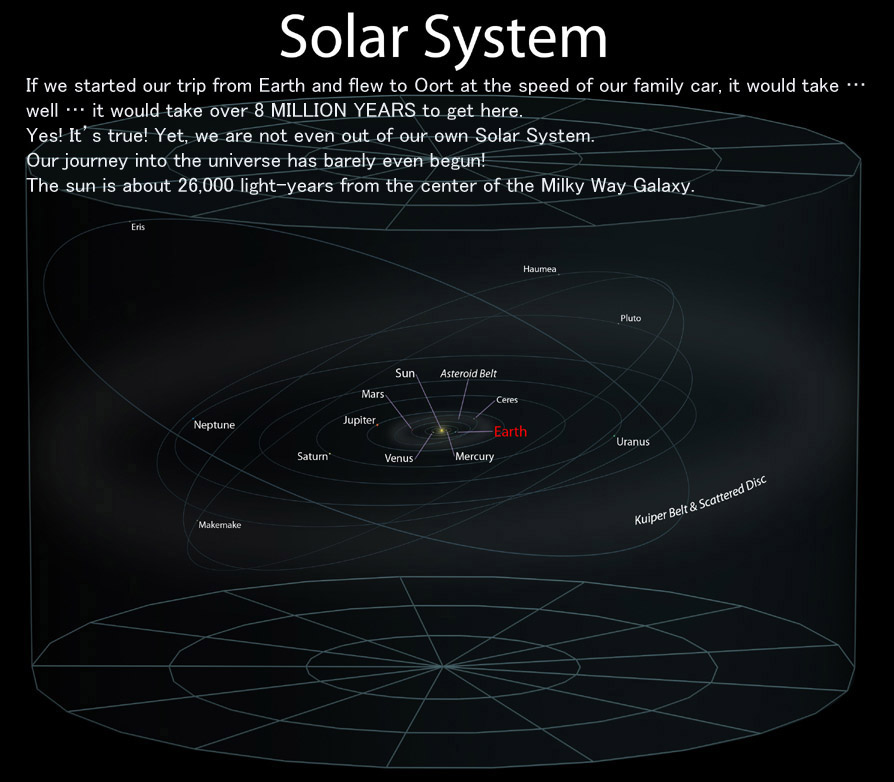
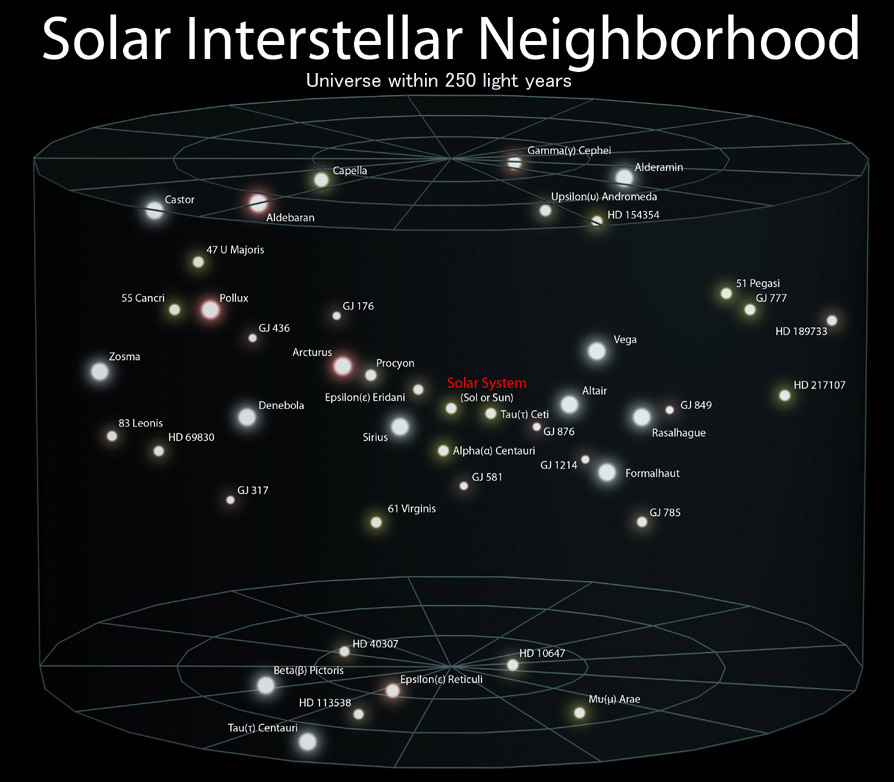
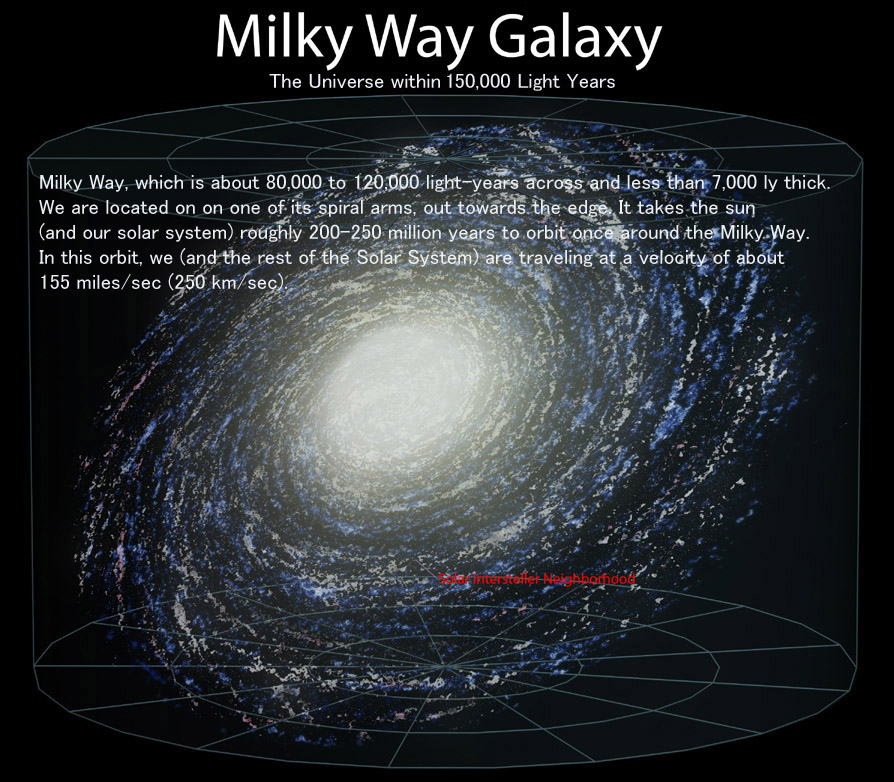

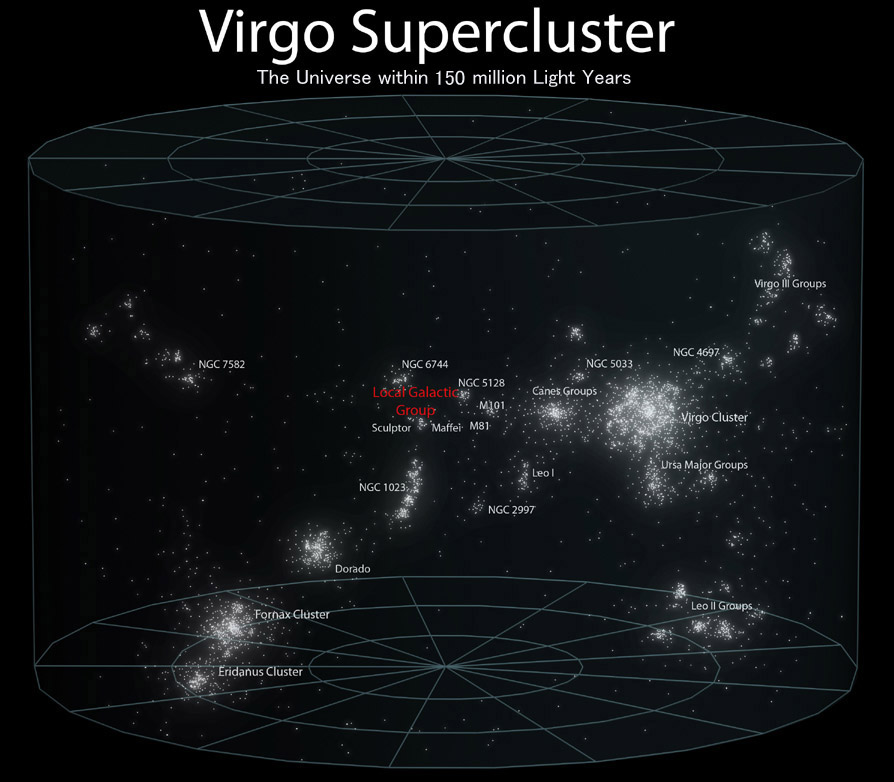
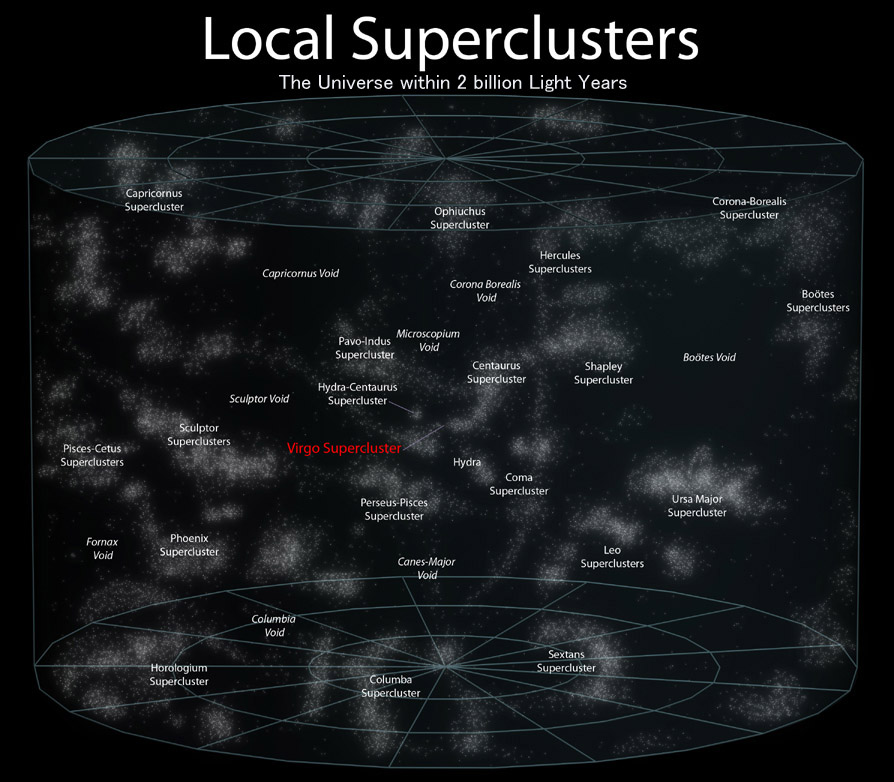
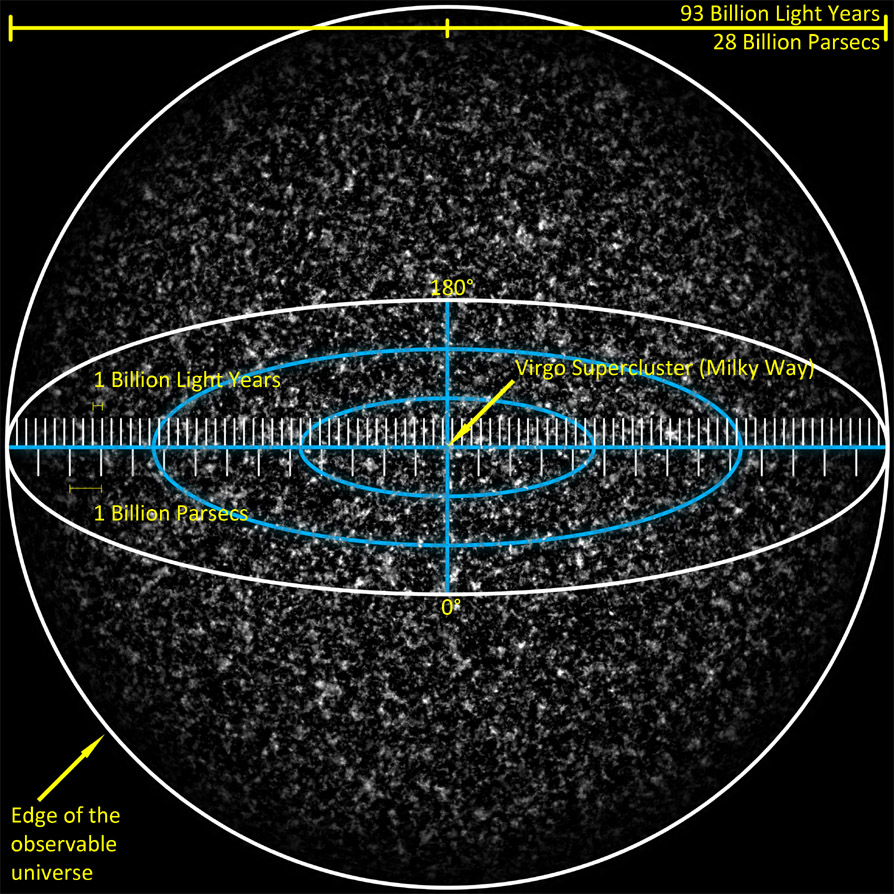
"Blessed
is He in Whose hand is the Sovereignty, and,
He is Able to do all things. (1) Who hath
created life and death that He may try you
which of you is best in conduct; and He is
the Mighty, the Forgiving, (2) Who
hath created seven heavens in harmony. Thou
canst see no fault in the Beneficent One's
creation; then look again: Canst thou see
any rifts? (3) Then look again and yet
again, thy sight will
return unto thee weakened and made dim. (4)
And verily We have
beautified the world's heaven with lamps,
and We have made them missiles for the
devils, and for them We have prepared the
doom of flame. (5)" Al-Mulk 67:1-5
وہ (خدا) جس کے ہاتھ میں بادشاہی ہے بڑی برکت
والا ہے۔ اور وہ ہر چیز پر قادر ہے (۱)
اسی نے موت اور زندگی کو پیدا کیا تاکہ تمہاری
آزمائش کرے کہ تم میں کون اچھے عمل کرتا ہے۔
اور وہ زبردست (اور) بخشنے والا ہے (۲) اس
نے سات آسمان اوپر تلے بنائے۔ (اے دیکھنے
والے) کیا تو (خدا) رحمٰن کی آفرنیش میں کچھ
نقص دیکھتا ہے؟ ذرا
آنکھ اٹھا کر دیکھ بھلا تجھ کو (آسمان میں)
کوئی شکاف نظر آتا ہے؟ (۳)
پھر دو بارہ (سہ بارہ) نظر کر، تو
نظر (ہر بار) تیرے پاس ناکام اور تھک کر لوٹ
آئے گی (۴)اور
ہم نے قریب کے آسمان کو (تاروں کے) چراغوں سے
زینت دی۔ اور ان کو شیطان کے مارنے کا آلہ
بنایا اور ان کے لئے دہکتی آگ کا عذاب تیار کر
رکھا ہے (۵)
Particle horizon of the observable universe
The particle horizon of the observable
universe is the boundary that represents the
maximum distance at which events can
currently be observed. For events beyond
that distance, light has not had time to
reach our location, even if it were emitted
at the time the universe began. How the
particle horizon changes with time depends
on the nature of the expansion of the
universe. If the expansion has certain
characteristics, there are parts of the
universe that will never be observable, no
matter how long the observer waits for light
from those regions to arrive. The boundary
past which events cannot ever be observed is
an event horizon, and it represents the
maximum extent of the particle horizon.
The universe versus the observable universe
Some parts of the universe may simply be
too far away for the light emitted from
there at any moment since the Big Bang to
have had enough time to reach Earth at
present, so these portions of the universe
would currently lie outside the observable
universe.
In the future the light
from distant galaxies will have had more
time to travel, so some regions not
currently observable will become observable
in the future. However, due to Hubble's
law regions sufficiently
distant from us are expanding away from us
much faster than the speed
of light (special
relativity prevents nearby objects in the
same local region from moving faster than
the speed of light with respect to each
other, but there is no such constraint for
distant objects when the space between them
is expanding; and the expansion rate appears
to be accelerating due to dark energy.
Assuming dark energy remains constant (an
unchanging cosmological constant), so
that the expansion rate of
the universe continues to accelerate,
there is a "future visibility limit" beyond
which objects will never enter our
observable universe at any time in the
infinite future, because light
emitted by objects outside that limit can
never reach points that are expanding away
from us at less than the speed of light (a
subtlety here is that because the Hubble parameter
is decreasing with time, there can be cases
where a galaxy that is receding from us just
a bit faster than light does manage to emit
a signal which reaches us eventually).
This future visibility limit is
calculated to be at a comoving
distance (comoving
distance is defined to be constant with
time, unlike proper distance which is used
to define recession velocity due to the
expansion of space) of 19
billion parsecs (62 billion light years),
which implies the number of galaxies that we
can ever theoretically observe in the
infinite future (leaving
aside the issue that some may be impossible
to observe in practice due to redshift, as
discussed in the following paragraph)
is only larger than the number currently
observable by a factor of 2.36.
Though in principle more
galaxies will become observable in the
future, in practice an increasing number of
galaxies will become extremely redshifted
due to ongoing expansion, so much so that
they will seem to disappear from view and
become invisible.
An additional
subtlety is that a galaxy
at a given comoving distance is defined to
lie within the "observable universe"
if we can receive signals emitted by the
galaxy at any age in its past history (say,
a signal sent from the galaxy only 500
million years after the Big Bang),
but because of the universe's expansion,
there may be some later age at which a
signal sent from the same galaxy will never
be able to reach us at any point in the
infinite future (so
for example we might never see what the
galaxy looked like 10 billion years after
the Big Bang), even though it remains
at the same comoving distance which is less
than the comoving radius of the observable
universe. This fact can be used to define a
type of cosmic event horizon whose
distance from us changes over time; for
example, the current distance to this
horizon is about 16 billion
light years, meaning
that a signal from an event
happening at present would eventually be
able to reach us in the future if the event
was less than 16 billion light years away,
but the signal would never reach us if the
event was more than 16 billion light years
away.
سُوۡرَةُ البَقَرَة
بِسۡمِ ٱللهِ ٱلرَّحۡمَـٰنِ ٱلرَّحِيمِ
ٱللَّهُ لَآ إِلَـٰهَ إِلَّا هُوَ ٱلۡحَىُّ
ٱلۡقَيُّومُۚ
لَا تَأۡخُذُهُ ۥ سِنَةٌ۬ وَلَا نَوۡمٌ۬ۚ
لَّهُ ۥ مَا فِى ٱلسَّمَـٰوَٲتِ وَمَا فِى
ٱلۡأَرۡضِۗ
مَن ذَا ٱلَّذِى يَشۡفَعُ عِندَهُ ۥۤ إِلَّا
بِإِذۡنِهِۦۚ
يَعۡلَمُ مَا بَيۡنَ أَيۡدِيهِمۡ وَمَا
خَلۡفَهُمۡۖ
وَلَا يُحِيطُونَ بِشَىۡءٍ۬ مِّنۡ عِلۡمِهِۦۤ
إِلَّا بِمَا شَآءَۚ
وَسِعَ كُرۡسِيُّهُ ٱلسَّمَـٰوَٲتِ
وَٱلۡأَرۡضَۖ
وَلَا يَـُٔودُهُ ۥ حِفۡظُهُمَاۚ
وَهُوَ ٱلۡعَلِىُّ ٱلۡعَظِيمُ (٢٥٥)
2:255 Al-Baqara
Allah! There is no God save Him, the Alive,
the Eternal. Neither slumber nor sleep overtaketh Him.
Unto Him belongeth whatsoever
is in the heavens and whatsoever is in the
earth. Who is he that intercedeth with
Him save by
His leave? He knoweth that
which is in front of them and that which is
behind them, while
they encompass nothing of His knowledge save
what He will. His throne includeth the
heavens and the earth, and
He is never weary of preserving them. He is
the Sublime, the Tremendous. (255)
خدا (وہ معبود برحق ہے کہ) اس کے سوا کوئی
عبادت کے لائق نہیں زندہ ہمیشہ رہنے والا اسے
نہ اونگھ آتی ہے نہ نیند جو کچھ آسمانوں میں
اور جو کچھ زمین میں ہیں سب اسی کا ہے کون ہے
جو اس کی اجازت کے بغیر اس سے (کسی کی) سفارش
کر سکے جو
کچھ لوگوں کے روبرو ہو رہا ہے اور جو کچھ ان
کے پیچھے ہوچکا ہے اسے سب معلوم ہے اور
وہ اس کی معلومات میں سے کسی چیز پر دسترس
حاصل نہیں کر سکتے ہاں جس قدر وہ چاہتا ہے
(اسی قدر معلوم کرا دیتا ہے) اس
کی بادشاہی (اور علم) آسمان اور زمین سب پر
حاوی ہے اور اسے ان کی
حفاظت کچھ بھی دشوار نہیں وہ بڑا عالی رتبہ
اور جلیل القدر ہے (۲۵۵)
So, nobody ever could observe the
universe, yet a tiny creation of God
Almighty.
سُوۡرَةُ لقمَان
بِسۡمِ ٱللهِ ٱلرَّحۡمَـٰنِ ٱلرَّحِيم
وَلَوۡ أَنَّمَا فِى ٱلۡأَرۡضِ مِن
شَجَرَةٍ أَقۡلَـٰمٌ۬ وَٱلۡبَحۡرُ
يَمُدُّهُ ۥ مِنۢ بَعۡدِهِۦ سَبۡعَةُ
أَبۡحُرٍ۬ مَّا نَفِدَتۡ كَلِمَـٰتُ
ٱللَّهِۗ
إِنَّ ٱللَّهَ عَزِيزٌ حَكِيمٌ۬ (٢٧) ِ
[031:027] And if all the trees on
earth were pens and the ocean (were
ink), with seven oceans behind it to add
to its (supply), yet would not the words
of God be exhausted (in the writing):
for God is Exalted in Power, full of
Wisdom.
اور اگر یوں ہو کہ زمین میں جتنے درخت ہیں
(سب کے سب) قلم ہوں اور سمندر (کا تمام
پانی) سیاہی ہو (اور) اس کے بعد سات سمندر
اور (سیاہی ہو جائیں) تو خدا کی باتیں
(یعنی اس کی صفتیں) ختم نہ ہوں۔ بیشک خدا
غالب حکمت والا ہے (۲۷)
Would you like
to travel to the edge of universe? Please follow me to a
journey
Let's Explore the Universe!
Is it small or
large? Is it “infinite” or does it “end” somewhere? If so,
what is beyond its outer boundary? How long has it been in
existence? How it is created?